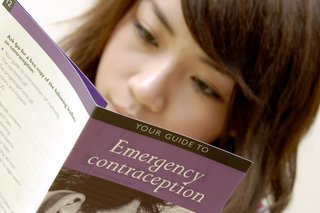How effective is emergency contraception? - Your contraception guide
It depends which type of emergency contraception you use and how soon you use it.
There are 2 methods of emergency contraception:
- the copper intrauterine device (IUD), or coil, which is the most effective type of emergency contraception.
- the emergency contraceptive pill, or morning-after pill. There are 2 types of emergency contraceptive pills – Levonelle and ellaOne.
Emergency contraception prevents pregnancy if you have not used contraception or think your usual method of contraception has failed.
Emergency contraception should not be used as your usual method of contraception.
Both types of emergency contraception are effective at preventing pregnancy if they are used soon after unprotected sex.
All women who need emergency contraception should be offered the copper IUD (if appropriate or acceptable), as it is the most effective form of emergency contraception.
Less than 0.1% of women who choose the IUD become pregnant, whereas pregnancy after taking the emergency contraceptive pill is not as rare. It's thought ellaOne is, on average, more effective than Levonelle.
Find out where to get emergency contraception

The IUD (coil)
The IUD is the most effective form of emergency contraception. Trials suggest the failure rate for the IUD as emergency contraception is lower than 0.1%. This means less than 1 woman in 1,000 using the IUD as emergency contraception will become pregnant.
The IUD must be fitted by a healthcare professional within 5 days (120 hours) of having unprotected sex or, if it's possible to estimate when you ovulate, up to 5 days after you ovulate.
The emergency contraceptive pill
Levonelle contains levonorgestrel and has to be taken within 72 hours (3 days) of unprotected sex. EllaOne contains ulipristal acetate and is licensed to be taken within 120 hours (5 days) of unprotected sex.
Both Levonelle and ellaOne are effective only if taken before the release of an egg from the ovary (ovulation). The sooner you take Levonelle or ellaOne, the more effective it will be.
Ovulation is triggered by rising levels of a hormone called luteinising hormone (LH).
Levonelle appears not to be effective after levels of LH start to rise. EllaOne continues to be effective a little later in the cycle.
A 2017 review of the evidence estimated that around 1 to 2% of women who take ellaOne after unprotected sex will become pregnant. In comparison, it's estimated that 0.6 to 2.6% of women who take Levonelle after unprotected sex will become pregnant.
The effectiveness of both Levonelle or ellaOne may be reduced if a woman has a high body mass index (BMI). This makes it harder to provide a more precise estimate for either pill.
Get medical advice if you vomit within 2 hours of taking Levonelle or 3 hours of taking ellaOne. You'll need to take another dose or have an IUD fitted.
Find out more about emergency contraception, including how it works and possible side effects.
Page last reviewed: 22 August 2024
Next review due: 22 August 2024